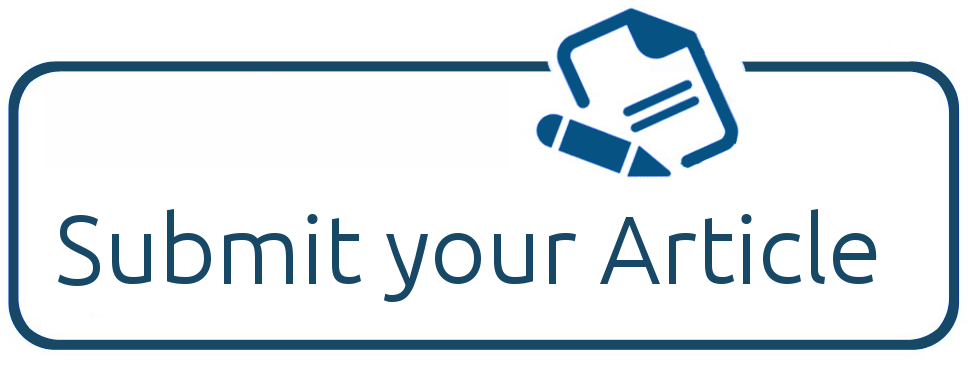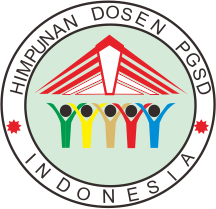Optimization of Instructional Technology for Attention Span in the Digital Generation
Abstract
Exposure to technology causes a decrease in attention span in the digital generation which have an impact on the learning process. This provides an opportunity for learning technology to provide solutions to deal with this. This Systematic Literature Review aims to explore learning technology on attention span to optimize learning in the digital generation. The search strategy uses the PRISMA method with a qualitative descriptive approach collected from the Google Scholar, Scopus, and PubMed databases, resulting in 20 articles for analysis. The results of the study show that the phenomenon of attention span is closely related to cognitive load theory. Therefore, most of the approaches described prioritize dividing learning content into small parts and integrating it with various strategies so that the content attracts students' attention. Through active and collaborative learning models, student involvement will also increase, which will affect their attention span.
Downloads
References
Anggraeny, D., Nurlaili, D. A., & Mufidah, R. A. (2020). Analisis Teknologi Pembelajaran dalam Pendidikan Sekolah Dasar. Fondatia, 4(1), 150–157. https://doi.org/10.36088/fondatia.v4i1.467
Anna, B., Christina, T., Marius, H., Philipp, W., Florian, P., Martin, L., Frank, H., & Ali, M. (2021). Transferring the sandwich principle to instructional videos: is it worth the effort? BMC Medical Education, 21(1), 1–7. https://doi.org/10.1186/s12909-021-02967-3
Arora, A. S., & Sharma, A. (2019). Integrating the arcs model with instruction for enhanced learning. Journal of Engineering Education Transformations, 32(3), 31–35.
Bhat, A. Z., Ahmed, I., Kameswari, L., & Khan, M. S. (2023). A Game Based Innovative teaching and learning environment to enhance progression and performance of students. SHS Web of Conferences, 156, 01001. https://doi.org/10.1051/shsconf/202315601001
Castro, A., Patera, S., & Fernández, D. (2020). How do Generations Z and Alpha learn from a teaching perspective? Implica tions for developing the learning to learn competence. Aula Abierta, 49, 286–292.
Deshmukh, A. F., Deshmukh, J., Gode, Y., Ramdas Dhawade, M., Jadhav, D., & Wankhade, Y. (2024). Assess the Effectiveness of an Inquiry Based Learning Method in Microbiology for Undergraduate Medical Students. E3S Web of Conferences, 491. https://doi.org/10.1051/e3sconf/202449104009
Fredricks, J., Blumenfeld, P. C., & Paris, A. H. (2004). School Engagement: Potential of the Concept, State of the Evidence. Review of Educational Research, 74(1), 59-109.
Garshasbi, S., Yecies, B., & Shen, J. (2021). Microlearning and computer-supported collaborative learning: An agenda towards a comprehensive online learning system. STEM Education, 1(4), 225–255. https://doi.org/10.3934/steme.2021016
George, S. V., & Supreetha, R. (2021). A reward-based active learning approach for motivating and engaging students in a large classroom. Journal of Engineering Education Transformations, 34(Special Issue), 574–578. https://doi.org/10.16920/jeet/2021/v34i0/157215
Hanif, A., & Gálvez-Peralta, M. (2023). The design of a “1-minute break” to help with students’ attention during lectures in a Pharm.D. programme. Pharmacy Education, 23(1), 648–655. https://doi.org/10.46542/PE.2023.231.648655
Hastini, L. Y., Fahmi, R., Lukito, H. (2020). Apakah Pembelajaran Menggunakan Teknologi dapat Meningkatkan Literasi Manusia pada Generasi Z di Indonesia? Jurnal Manajemen Informatika (JAMIKA), Volume 10(1), 12–28. https://doi.org/10.34010/jamika.v10i1
Jessica, J., & Santoso, I. (2022). Handling the Attention Span of Grade 1 Students At Equalbright School. PROJECT (Professional Journal of English Education), 5(2), 284. https://doi.org/10.22460/project.v5i2.p284-287
Khlaif, Z. N., & Salha, S. (2021). Using TikTok in Education: A Form of Micro-learning or Nano-learning? Interdiscip J Virtual Learn Med Sci, 12(3), 2–7. https://doi.org/10.30476/it
Kohler, T. J. (2023). Caught In The Loop : The Effects of The Addictive Nature Of Short-form Videos On Users ’ Perceived Attention Span And Mood Bachelor Thesis Table of Content. July, 1–56.
Liberatore, M. W., & Xu, K. S. (2022). Animation Analytics in an Interactive Textbook for Material and Energy Balances. ASEE Annual Conference and Exposition, Conference Proceedings. https://doi.org/10.18260/1-2--41361
Lodge, J. M., & Harrison, W. J. (2019). The role of attention in learning in the digital age. Yale Journal of Biology and Medicine, 92(1), 21–28.
Mat-jizat, J. E., Abas, B., Mansor, M., & Khalid, K. (2020). The Effectiveness of Spaced Learning as a Pedagogical Strategy in Enhancing Student Learning and Motivation. International Journal of Academic Research in Business and Social Sciences, 10(5), 494–506. https://doi.org/10.6007/ijarbss/v10-i5/7221
Mosca, J. B., Curtis, K. P., & Savoth, P. G. (2019). New Approaches to Learning for Generation Z. Journal of Business Diversity, 19(3), 66–74. https://doi.org/10.33423/jbd.v19i3.2214
Nicholas, A. J. (2020). Preferred learning methods of generation z. Digital Commons @ Salve Regina Faculty, 1(1), 1–12. https://bit.ly/3YM9fZz
Patterson, N., Schultz, M., Wood-Bradley, G., Lanham, E., & Adachi, C. (2020). Going digital to enhance the learning of undergraduate students. Journal of University Teaching and Learning Practice, 17(3), 1–15. https://doi.org/10.53761/1.17.3.6
Rani, S., Toendan, K., Yedithia, F., & Thomas, O. Analisis Kebutuhan Pengembangan Media Pembelajaran Berbasis Web pada Kurikulum Merdeka. Jurnal Pedagogik dan Dinamika Pendidikan, 12(2), 432-447. https://doi.org/10.30598/pedagogikavol12issue2year2024
Robles, H., Jimeno, M., Villalba, K., Mardini, I., Viloria-Nuñez, C., & Florian, W. (2023). Design of a micro-learning framework and mobile application using design-based research. PeerJ Computer Science, 9, 1–31. https://doi.org/10.7717/PEERJ-CS.1223
Salsabila, U.H., Agustian, N. (2021). Peran Teknologi Pendidikan Dalam Pembelajaran. Islamika: Jurnal Keislaman Dan Ilmu Pendidikan, 3(1), 123–133. https://doi.org/10.55681/sentri.v3i7.3115
Samala, A. D., Bojic, L., Bekiroglu, D., Watrianthos, R., Hendriyani, Y. (2023). Microlearning: Transforming Education with Bite-Sized Learning on the Go-Insights and Application. International Journal of Interactive Mobile Technologies, 17(21), 4–24.
Seidel, N. (2024). Short, Long, and Segmented Learning Videos: From YouTube Practice to Enhanced Video Players. Technology, Knowledge and Learning, 0123456789. https://doi.org/10.1007/s10758-024-09745-2
Simon, A. J., Gallen, C. L., Ziegler, D. A., Mishra, J., Marco, E. J., Anguera, J. A., & Gazzaley, A. (2023). Quantifying attention span across the lifespan HHS Public Access. Front Cognit, 2. https://doi.org/10.3389/fcogn.2023.1207428.Quantifying
Sweller, J. (2023). The Development of Cognitive Load Theory: Replication Crises and Incorporation of Other Theories Can Lead to Theory Expansion. Educational Psychology Review, 35(4), 1-20. https://doi.org/10.1007/s10648-023-09817-2
The Treetop. (2024). Average Human Attention Span By Age: 31 Statistics. https://www.thetreetop.com/statistics/average-human-attention-span.
Valenti, S., Lund, B., & Wang, T. (2020). Virtual reality as a tool for student orientation in distance education programs: A study of new library and information science students. Information Technology and Libraries, 39(2). https://doi.org/10.6017/ITAL.V39I2.11937
Vivekananth, P. (2022). Nanolearning: A New Paradigm Shift in Teaching and Learning. International Journal of Engineering and Management Research, 12(1), 112–114. https://doi.org/10.31033/ijemr.12.1.14.
Copyright (c) 2025 PEDAGOGIKA: Jurnal Pedagogik dan Dinamika Pendidikan

This work is licensed under a Creative Commons Attribution-NonCommercial-ShareAlike 4.0 International License.









 This work is licensed under
This work is licensed under 